After Ton first mentioned Obsidian, I decided to try it out: like Ton I’m looking for a way out of Evernote, but I’m also looking to become better at making notes about projects and plans in a trusted repository so that I can refer back later as a resource (on the job we’ve used Trac for more than a decade now, and it’s proved invaluable to be able to refer to the copious notes my younger self took).
Obsidian has a simple plug-in called “Daily Notes” that makes it slightly easier to create a new note every day, and, on a lark, I started to do this, noting things under three headings: “Work,” “Projects,” and “Home & Family,” with an additional “Accounting” thrown in on money-handling days.
To my surprise, I’ve kept it up for the last 49 days:
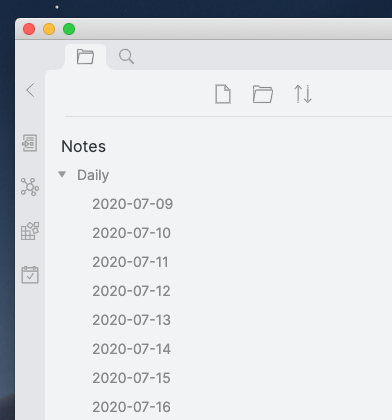
My father kept a daily log from the mid-1960s until he died. He started off on paper, and moved to using a computer in 1990. It was that log we consulted when we wanted to known where we watched the walk on the Moon in 1969. I have 28 years worth of his digital log in a file on my computer: it’s a plain ASCII file with 301,543 lines in it. Reading it now, I realize that I use exactly the same style and voice as he did for all those years, and cover much of the same ground, freely mixing work, family and projects.
Here, for example, were his notes from August 27, 1993, 27 years ago today:
- hot weather continues
- called for rates of alternative long-distance service
- called William Dam Seeds and Hank at RBG re winter rye/wheat, when to turn under the buckwheat
- winter rye not available at Millgrove Feed till September 10
- to CCIW at 1215 to pickup Chris for goodbye lunch at La Trattoria
- Chris and I worked through documentation of cleanup of files, gave Harry Pulley the format for numeric data
- Chris back to university on Monday
- PM: entered all cash data in budget
Among my notes for today:
- Moved the explanatory Moon copy from results pages to the generic Moon Phase Calendar index page.
- DNS updates for gardenplanner.almanac.com.
- Got confirmation that I could transfer the AccountEdge license to Windows from Mac and did so: worked without problems.
- Lunch at Madame Vuong’s.
- Got Oliver’s prescription refilled at Parkdale Pharmacy.
When I cracked open Dad’s log after he died, I thought I might find deeper insight into my father, some undiscovered aspect of his personality that might explain him, and me, and fatherhood.
But I didn’t.
I found “tilled middle garden” and “DLed and tested some BBS files” and “ran memmaker on 386H.”
Where there are references to me they are things like “email from Peter, not interested in Honda after all,” and “call from Peter, their house offer has been accepted,” and “big breakfast of potato pancakes made by Peter with new food processor.” And I realized that he wasn’t writing for anyone other than himself. And I’m doing the same thing.
There is utility, I have found, in creating a running reference: I couldn’t remember when an intake worker had called me from the government in July, and then I remembered that I noted it. And I’ve got our new refrigerator’s serial number noted so that when it breaks in 20 years, I’ll know where to look. But more so than any practical reference, I think there’s value in noting the events of each day as a way of simply processing what happened, developing a sense of progress (or not), realizing that when it feels like nothing at all has been happening, there’s actually been a lot.
So I’ll keep at it.

Why my dentist needs to know that I’m “widowed” I do not know. But it’s the first time I’ve had to check that box.
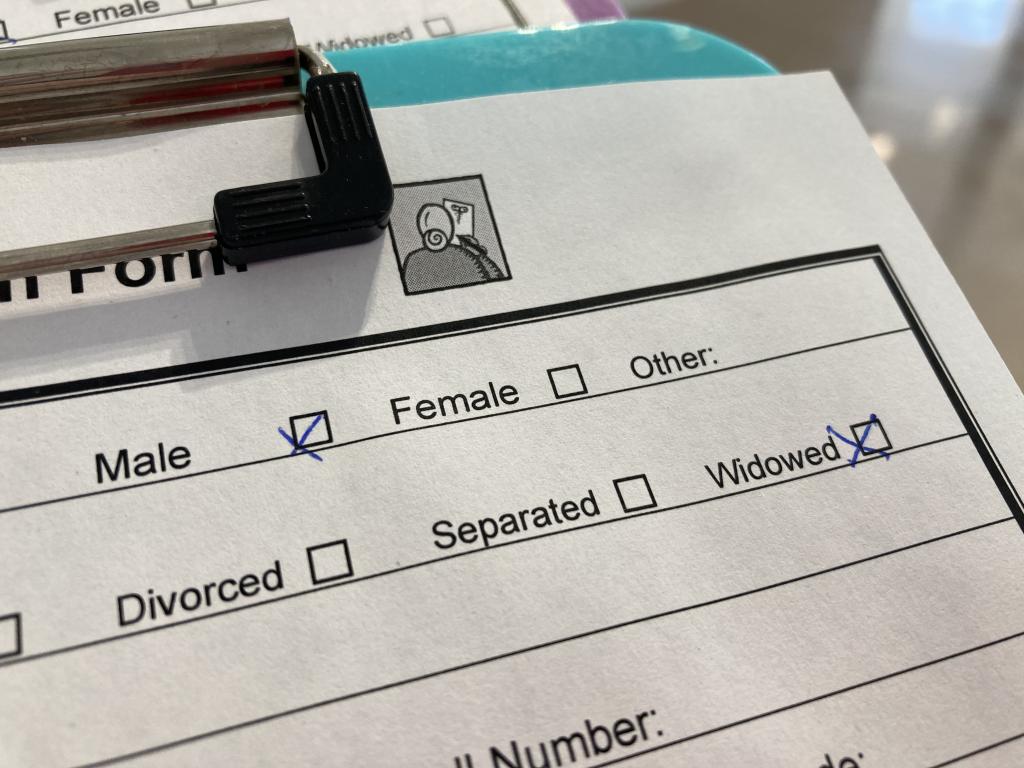
I’ve been trapped in a Hogan’s Heroes vortex for several days now: the YouTube singularity thinks it’s on to something, and I keep confirming it.
This led me to Wikipedia, where I learned that, despite being shot in California, every single episode was set in winter:
Although it was never snowing on the film set and the weather was apparently sunny, there was snow on the ground and building roofs, and frost on the windows. The set designers created the illusion of snow two ways: the snow during the first several seasons was made out of salt. By the fourth season the show’s producers found a more permanent solution and lower cost, using white paint to give the illusion of snow. By the sixth and final season – with a smaller budget – most of the snow shown on the set was made out of paint.
And then there’s Bing Crosby.
Tai Chi Gardens
Perhaps my favourite, and most-frequented restaurant ever, Tai Chi Gardens was on Pownal Street just south of Grafton, and was operated by my friends Kennie and Wennie. Menu from April 2011.
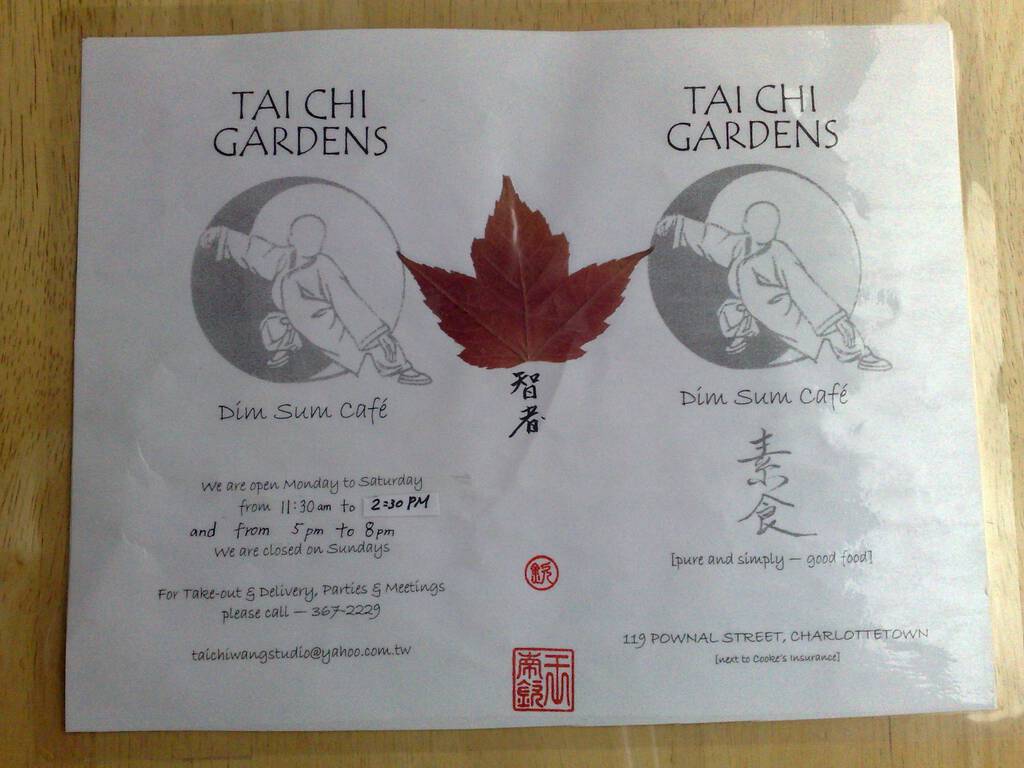
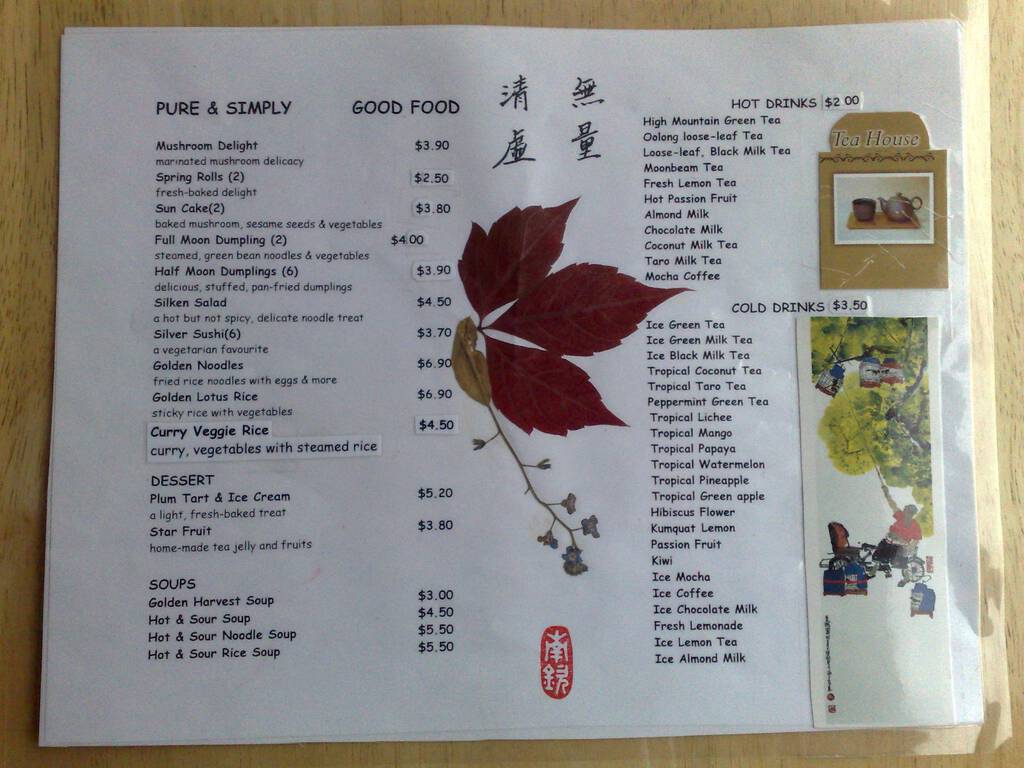
The Seatreat
A long-running and much-loved restaurant at the corner of Euston and University, since closed. Menu from July 2010.

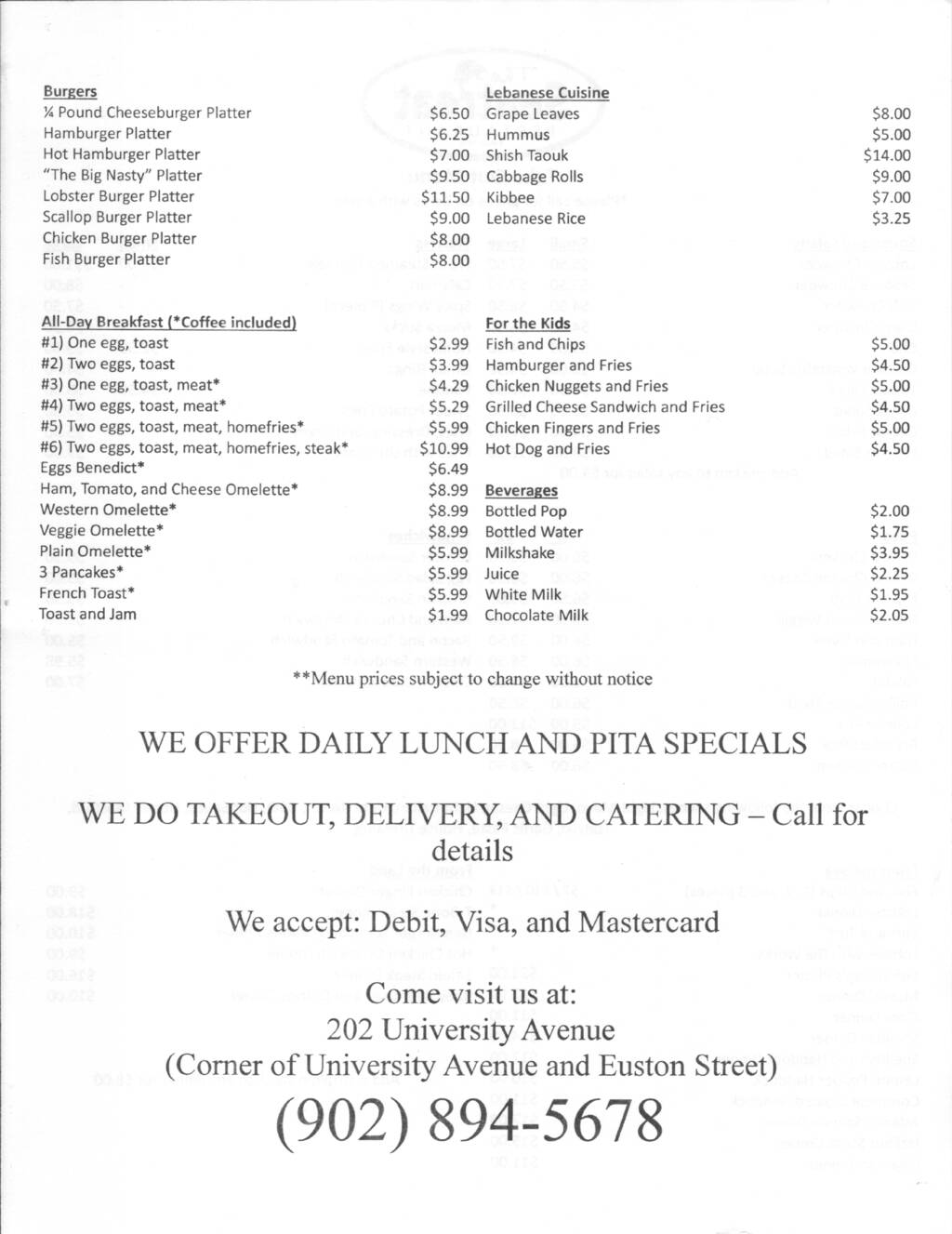
Orange Lunchbox
It started off as an (orange) food truck, and moved into the space on Great George Street next to Cedar’s that’s now home to Crafters Burgers and Khoaw Son. Menu from June 2013.

Black & White
One of the last of the grandfathered-in downtown grills, Black & White is still in operation, albeit under new ownership. This is the menu from March 2011.
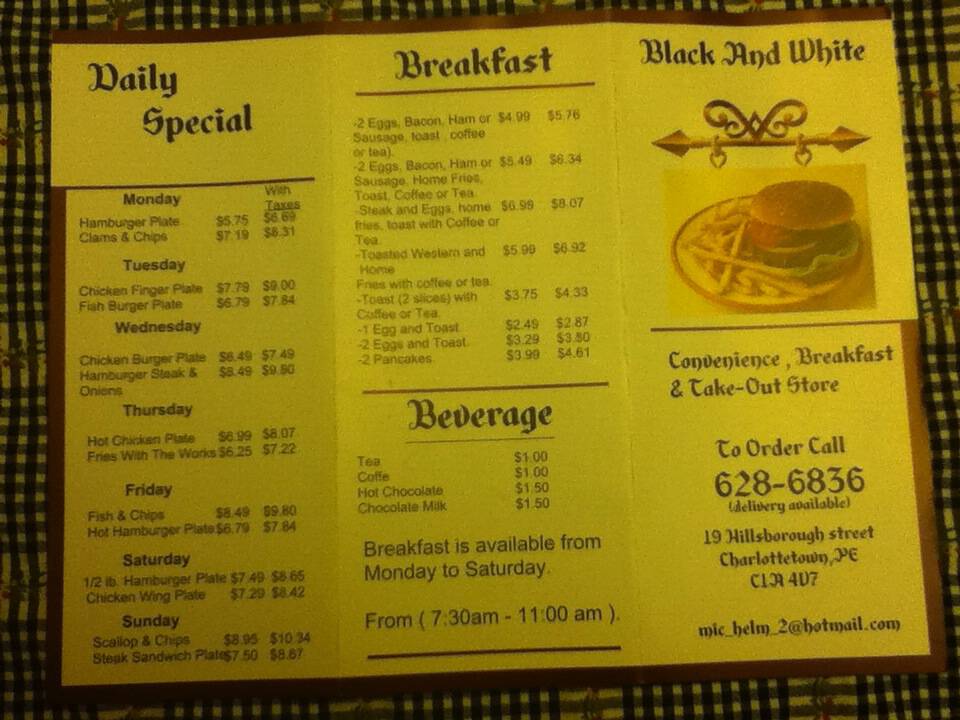
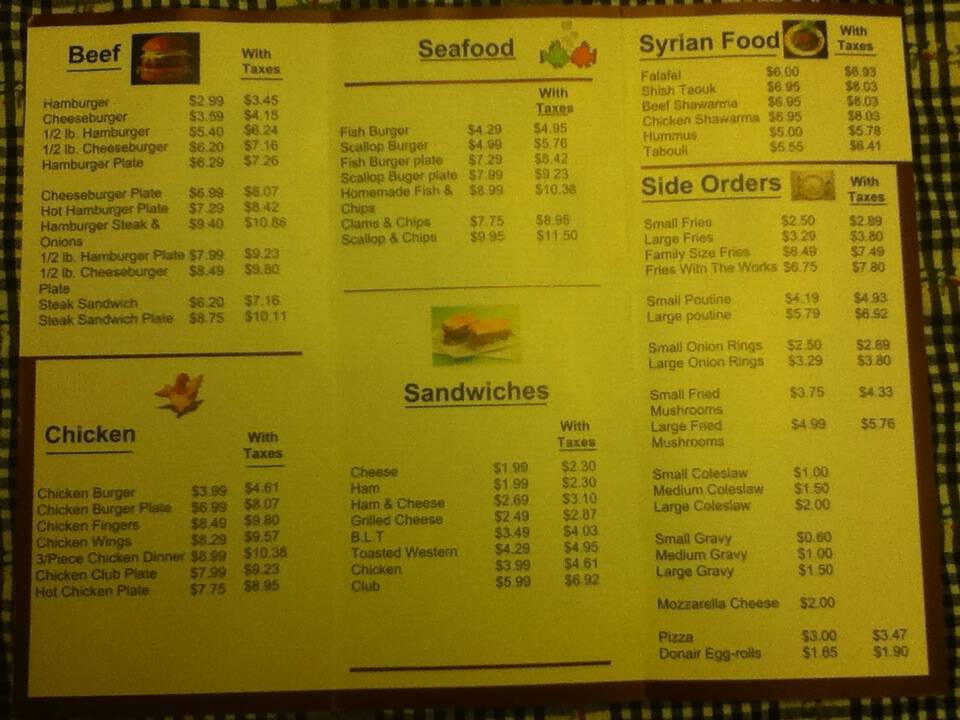
Terre Rouge
It keeps changing its name and its emphasis, but there’s been a restaurant in the old Carter’s Office Supplies for a long time now. This is the takeout menu from January 2013.
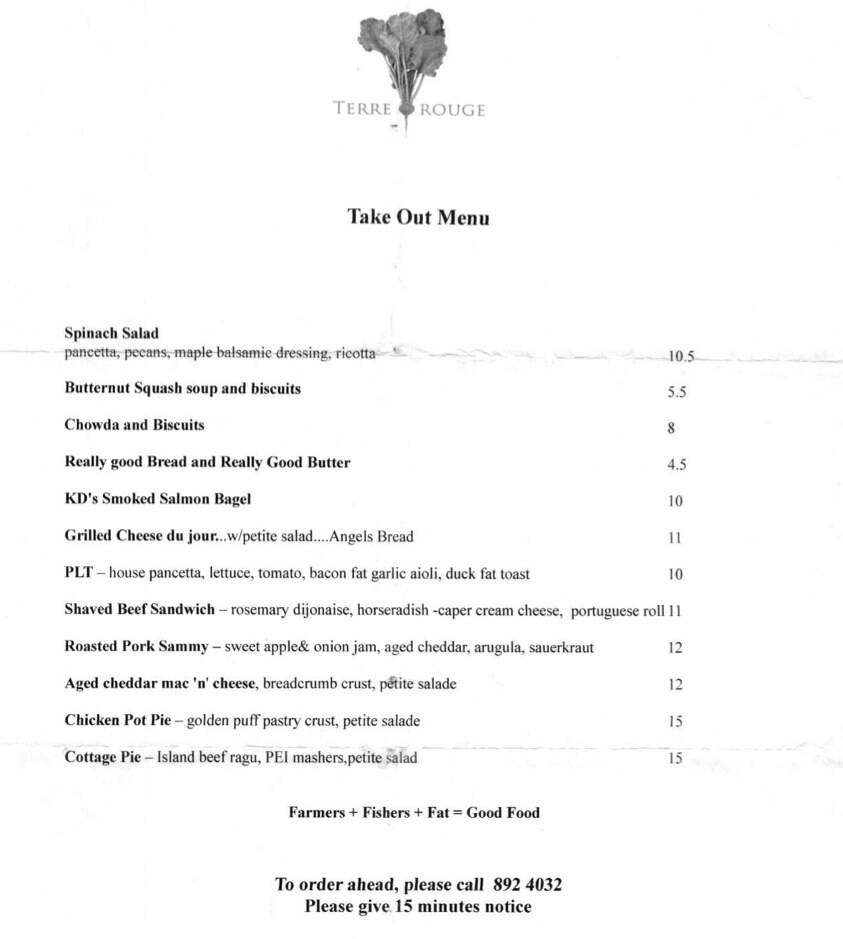
A few years ago a physiotherapist recommended that I join a breathing group. She might as well have recommended I join a motorcycle gang for all the understanding I had at the time for why one would join a group centred around breathing. I understand (a little) more about intentional breathing now, to the point where I might even consider seeking out a breathing group, if such groups were not so obviously a COVID vector at present.
Which leads me to Ashley Neese.
I found my way to Ashley Neese via a Google search for “relationship with grace,” as I was trying to understand what a relationship with grace might be after a friend recommended that I seek to “forge a deeper and wiser relationship with grace.” The meaning of grace in this context isn’t self-evident, and so it requires some puddling about.
This search led me to Letting Go with Grace, a post that Neese wrote in her blog in 2016 about ending a relationship:
Nobody knows how to end a relationship. Even if you read all of the self-help books and talk to your friends, family, teachers, and therapists, you still have to navigate the conversations and the separation on your own. It’s your work to do, it’s your path to carve out.
The reality is, we’re all just making up how we relate to each other as we go along. While it can seem overwhelming to breakup with someone you love, the truth is, you only have two paths to take. You can choose to let go with an open heart or you can shut yourself off from what is happening. To end a relationship with an open heart is to let go with grace. This is the path I chose because I had enough experience with unconscious breakups over the years and this time I had to do things differently for myself and for Jason. I owed us both that much.
While the post doesn’t come right out and say what she means by grace, reading it provides an uncommonly deep insight into it nonetheless. It might not be the grace I need to forge a deeper and wiser relationship with, but it’s a place to start.
Ashley Neese also happens to be a breathwork practitioner, and although it takes some skill to navigate the language rapids of her professional offerings (“sessions are led in a safe and co-regulated energy field”), I’ve found the simple breathing exercise she describes here to be a helpful starting place for understanding what this world is all about.
Updated November 11, 2020 to version 2.0.
The number of Vietnamese restaurants in Charlottetown was zero for so long that it seems a miracle that we now have nine.
This is so many that a map is required. So I created the map.
Download a PDF map, suitable for printing and pinning to your bulletin board.
The restaurants on the map are:
- Madame Vuong (review)
- Alambé Coffee
- Phở Vietnam
- Phở Queen
- The Son
- Saigon Cuisine
- PEI Viet Coffee
- May Deli
- Non La Vegetarian Cafe
This map is licensed under a Creative Commons Attribution-NonCommercial-ShareAlike 4.0 International License; please copy it far and wide. And eat lots of Vietnamese food: it will make you happy.
I’ve also ensured that up to date information about all of the restaurants is in OpenStreetMap, and you can see a digital map, or export as JSON, here.
 It’s been 88 days since my last hair cut, at the end of May.
It’s been 88 days since my last hair cut, at the end of May.
After lunch I got caught in the thunderstorm at Alambé Coffee on Kent, and, fortified by a hearty Alambé Phin Ice Milk Coffee, I made a run for Ray’s Place. I caught them on a good day: walked right in and I was first in line.
Since my May visit they’ve started to require masks for customers, so everyone, barbers and clients, were masked-up. Ray himself was working, and the luck of the draw put me in his chair.
We had a good mask-intermediated chat while he was cutting my hair, and I learned the gymnastics moves required to have him trim my sideburns (I hold the mask on, he manages the ear-loops).
For some reason I feel it’s important to mark events like haircuts in this digital commonplace book.
Can you make money buying “forever” stamps before a postage rate increase and then reselling then after? These reporters did the math.
I didn’t set off knowing what I was going to create last week, but it ended up as something of a visual expression of what grief feels like.
I started off with the words “I’m okay” in my head, evolving this into the all-caps I’M OK.
I set this in 120 point Akzidenz Grotesk, using a comma for an apostrophe:
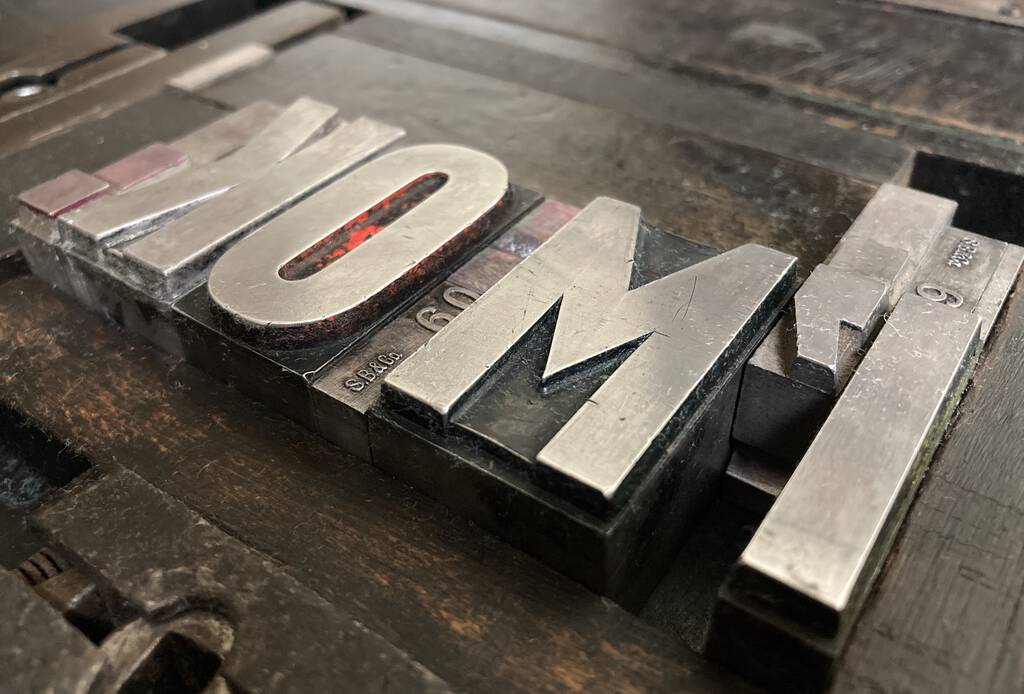
I sliced up some letter-sized Staples house-brand 67 lb. card stock into cards 5½ by 4¼ inches in size to print on, just large enough, give or take, to qualify as a postcard for mailing.
Since seeing a printer mix inks with a palette knife the other day, I’d been eager to try this out for myself, and so I started with white and added just the faintest touch of yellow
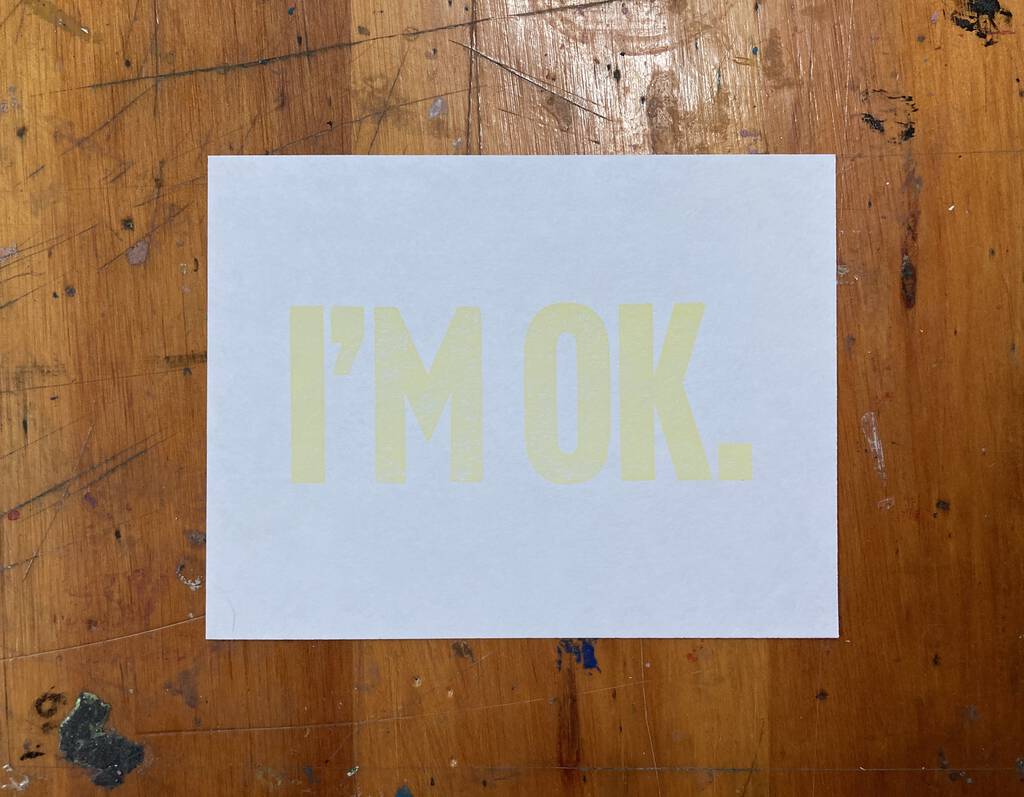
Seeing that I’M OK hovering on the card, barely visible in some lights, I was struck suddenly with the feeling that a very tentative sense of “I’m okay” was something I’ve felt frequently over recent months. But it’s not always tentative: sometimes it’s very strong. And sometimes it’s halfway in the middle.
So I added a little more yellow, and printed some more obviously-yellow cards. And then added some red to get some orange cards. And then even more red to get what amounts to a bold declaration, more an “I’m okay!” than an “I’m okay.”
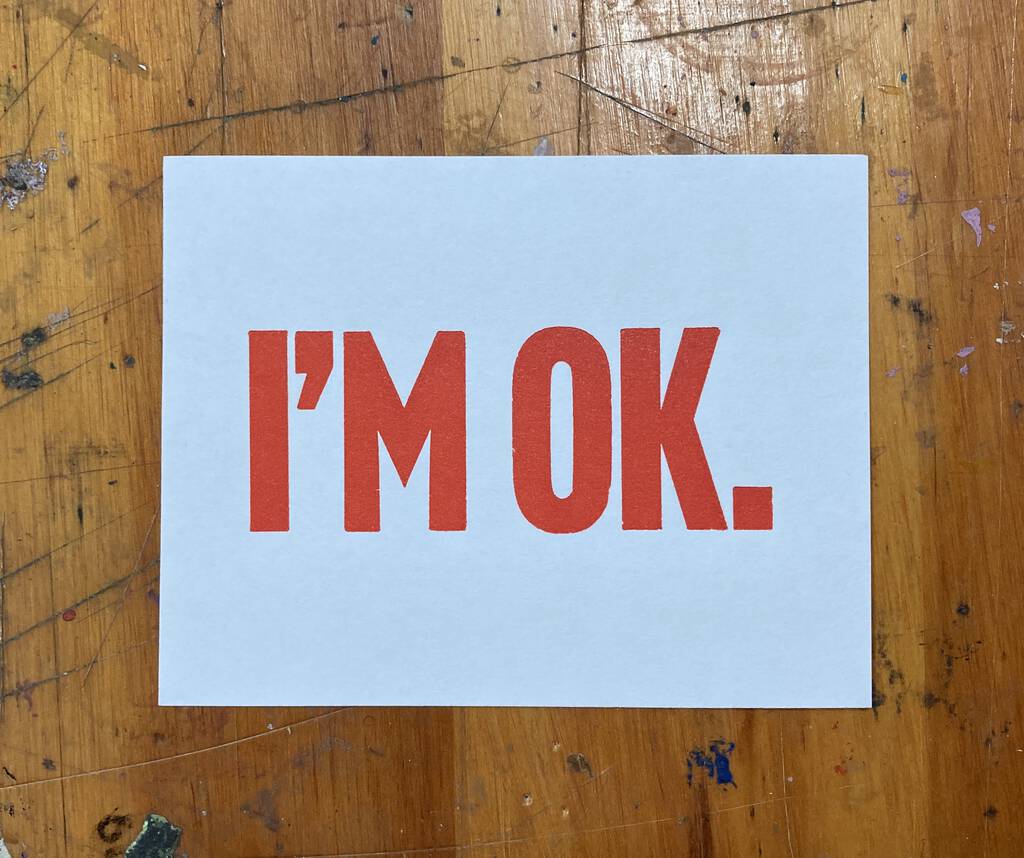
Put together in a montage, these various shades of being okay ended up becoming something even more familiar, the ebb and flow of being okay, and not being okay, and being very okay, and then shudderingly not being okay at all. That is what grief feels like. And I accidentally found a way to express it typographically.
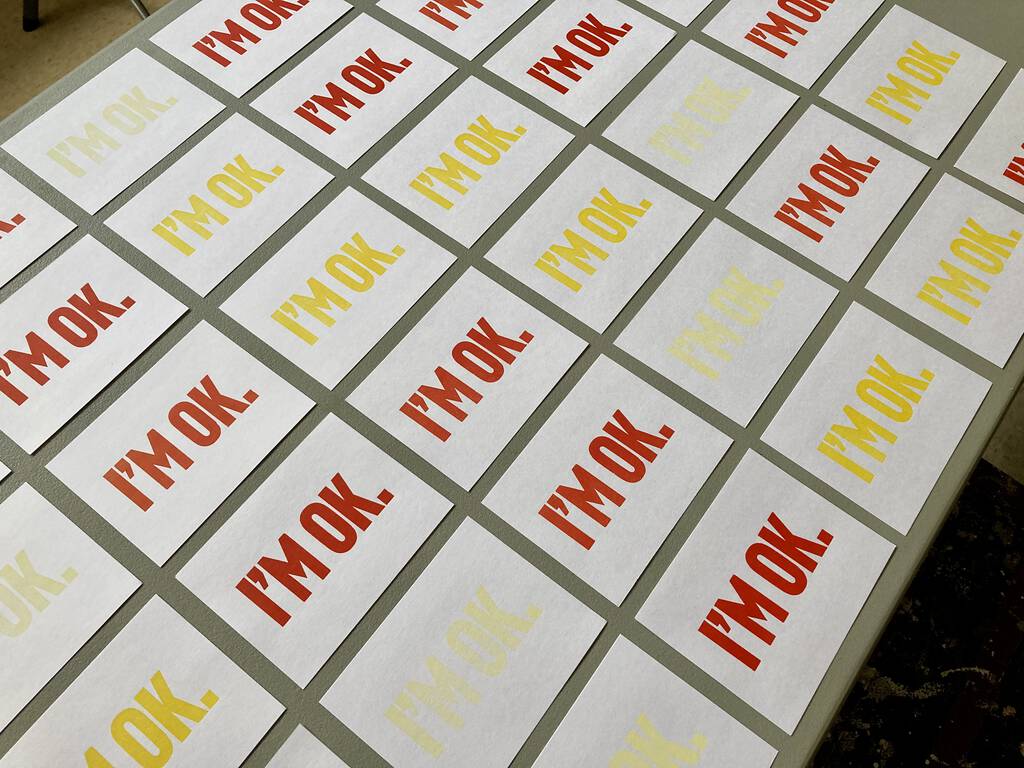
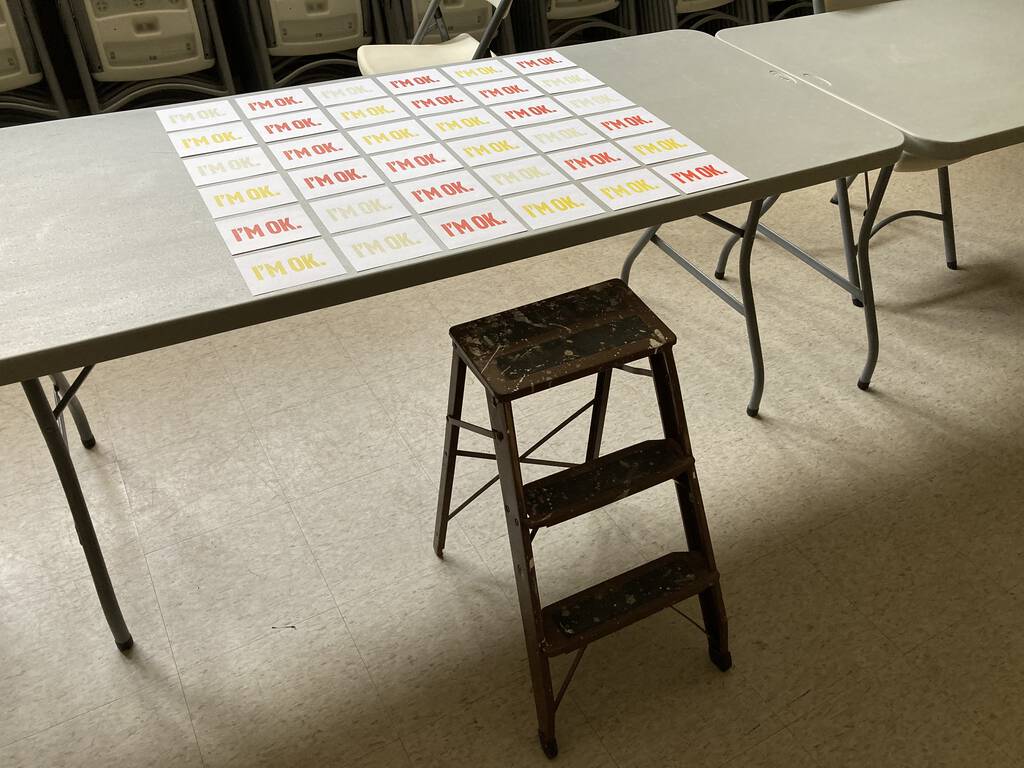
I first reported on the number of electric vehicles registered by the Province of PEI last year; I received updated numbers for 2020 late last week, and here’s a year-on-year comparison:
| Vehicle Type | 2019 | 2020 | Increase |
|---|---|---|---|
| Battery Electric | 33 | 84 | 150% |
| Hybrid | 403 | 862 | 113% |
| Plug-in Hybrid | 7 | 57 | 714% |
| TOTAL | 443 | 1,003 | 126% |
“Battery electric” vehicles are ones that run entirely on electricity; “hybrid” vehicles run on both gasoline and electricity but don’t plug in (the battery is charged by the gasoline engine), and ”plug-in hybrid” vehicles run on both gasoline and electricity (and the battery is charged both by the gasoline engine, and if plugged into the mains).
I suspect that the dramatic more-than-doubling in electric vehicles over the last year is due a combination of an actual increase and in better data quality control, spurred by the fact that electric vehicles are entitled to free motor vehicle registration. Nonetheless, the growth is good to see.
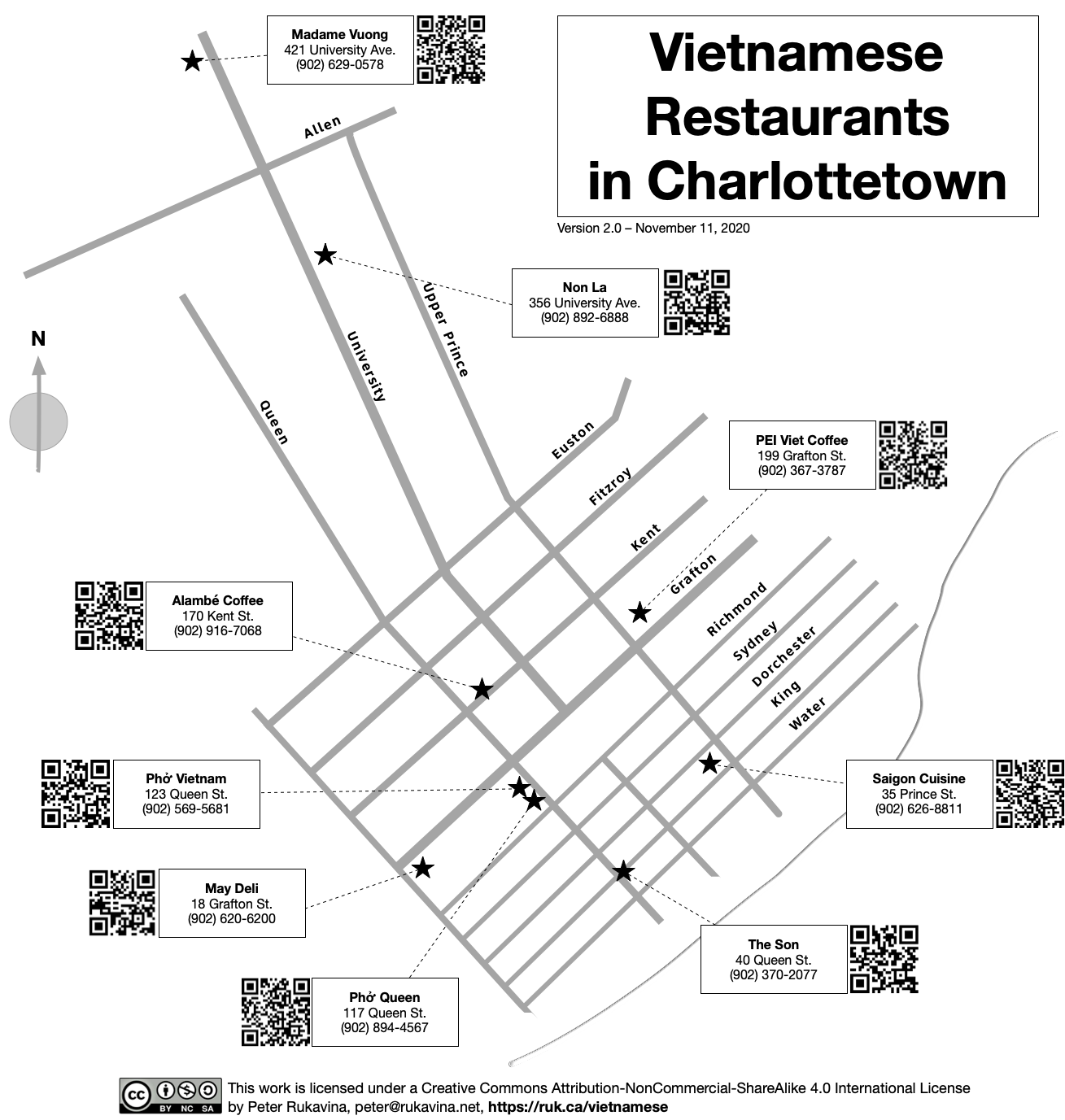
 I am
I am